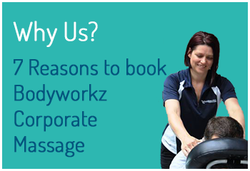|
There are millions of dollars going into research about stress, more drugs being developed, more seminars being held, more tools available etc. And this is all just to help us cope with stress. And then there is good stress, as well as the bad. We actually do need some stress in our lives, need to have some purpose to get up and get going. Having too much to do can be stressful, but so can NOT having enough to do (for example being between jobs etc). The dictionary defines stress as: ‘a force excerted on one thing by another’. Or ‘the adverse reaction people have to excessive pressures or other types of demand placed on them’. (wikipedia) Personally I think stress in itself is a basic concept. It is how we handle it that is the hard part. Stress is basically our perception of a load that has been placed upon us, which is why everybody handles stress differently. What stresses one person is handled brilliantly by another. Change, for example, is hard for some people and becomes stressful for that person, while another person thrives on the challenge of the same change. And there are no exceptions in the workplace. We perceive the load (demand) that has been asked of us as being bigger than we can handle. We feel out of control, powerless and we start to think that we can’t cope. Of course, because we also don’t want to be perceived as someone that can’t handle our jobs or the demands of our job, we just get on with it, most of the time. Stress, in other words, is everywhere in our daily lives. It affects us on levels we are not even aware of. See if you personally recognize some of these typical symptoms of stress:
So what can you do about it? Plenty, although that is a book in itself. From my point of view as a massage therapist, I would recommend the following: Check your breathing: A forward head posture, along with forward ‘slouchy’ shoulders makes us prone to shallow breathing, which is turn causes a lack of bloodflow to the muscles and the brain. Learn to deep-breathe through your diaphragm (but don’t slow your breathing rythm down too much). When your shoulders are elevated, you cannot take a deep breath. Check your posture: Most people are aware of faults to their posture but find it hard to change it. I always stress (excuse the pun) that the best thing to do is to check your head posture first. Keep your head back (chin pushed back to chest), this will automatically bring your shoulders down. And stand up, move, and stretch.
0 Comments
Leave a Reply. |
Susy Egneus -
Founder of Bodyworkz, sharing thoughts, facts and ideas about living a stress free life, and what mobile chair massage is all about! Categories
All
Archives
December 2021
|
Subscribe to our newsletter for info, specials and general updates |
Quick Links
|
Contact UsFREECALL 0800 263996 |
|
Bodyworkz proudly supports the New Zealand Massage Association (MNZ) and follow their Code of Ethics.
© Bodyworkz Corporate Massage Ltd 2011 - 2023. Website developed by Outbox Ltd |







 RSS Feed
RSS Feed

